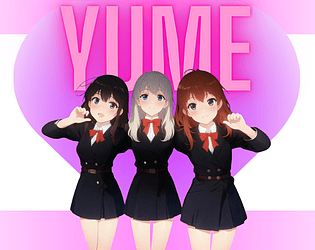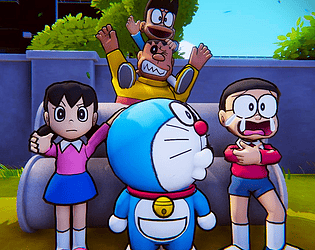About Me

I'm Ritesh Verma, a passionate game developer and animator with a knack for creating engaging and immersive experiences. I'm fueled by the challenge of bringing ideas to life through code and animation, and I thrive in collaborative environments where I can learn from others and contribute my expertise.
Skills
A showcase of my technical and creative expertise.
Coding
Object-Oriented Programming
Testing & Debugging
Color Grading
Adobe Premiere Pro
Adobe After Effects
Filmora 13
CapCut
Unity
Advanced Editing Techniques
Character Animation
Work History
My professional journey and contributions.
Team Emogi (Pune)
Programmer (April 2019 - April 2022)
- Designed and developed robust software solutions to meet client requirements for functionality, scalability, and performance.
- Collaborated with team members to define application requirement specifications.
- Identified opportunities for process improvement, leading to a more efficient development cycle.
3D Animator (April 2022 - Present)
- Developed gameplay mechanics, features, and systems using C# in Unity for various game projects.
- Collaborated with designers, artists, and animators to integrate assets and ensure seamless gameplay experiences.
- Optimized game performance by profiling and debugging code, reducing memory usage, and enhancing frame rates across multiple platforms.
Video Editing
Immersive visuals brought to life through my edits.
3D Animation
Advertisement
Documentary Style
Gaming
3D Map Animation
3D Scene
VFX
VFX 1
3D Animation 1
3D Animation 2
KeyFrame
Gaming Style
Shorts or Reels
Vlog Style
2D Animation
YouTube Video Section
A curated selection of my content categorized across Gaming, Vlogging, and Game Development.
Gaming
Gaming Video 1
Gaming Video 2
Gaming Video 3
Gaming Video 4
Vlogging
Vlog Video
Game Development
GameDev Video 1
GameDev Video 2
GameDev Video 3
Thumbnail Designing
Snapshots transformed into captivating visuals.










Repositories
Explore my open-source projects on GitHub. Each repository includes source code, documentation, and dedicated webpages for more details. Visit my GitHub profile for the full overview.
OBS-Scene-Controller
The OBS Scene Controller is a powerful tool developed by Ritesh Verma to streamline OBS scene management and screen casting for content creators. It integrates a PySide6 GUI, Flask web server, and MSS-based screen capture for a seamless live production experience.
OpenPDF
OpenPDF is a lightweight, fast, and feature-rich PDF viewer application built using Python and PyQt5. Designed with a sleek dark mode and a clean interface, OpenPDF offers a modern PDF reading experience.
Live-Wallpaper
Live wallpaper engine made with pure Python — redefining desktop interaction without heavy resources.
Ritesh Verma’s Rocket Project (2024–2025)
From Science Exhibition to Chandrayaan-Inspired Rocket & Rover Mission
Project Summary
Developer: Ritesh Verma
Funding: ₹40,000 by SNBP Yerwada
Key Features: Solid-fuel rocket, deployable rover, telemetry
Status: Completed prototype
Inspiration: ISRO’s Chandrayaan-3

Overview
Ritesh Verma’s Rocket Project (2024–2025) is a pioneering student-led aerospace endeavor initiated and executed by Indian student and inventor Ritesh Verma. The project gained recognition after a successful science exhibition that led to funding of ₹40,000. The project aimed to simulate a realistic lunar mission with a custom-built solid-fuel rocket, a deployable rover, and integrated telemetry systems—all designed and engineered by Verma himself.
Background
At just 18 years old, Ritesh Verma presented a small-scale satellite and rocket system capable of wireless image transmission using a networked tower at a local science exhibition. The project’s sophistication and ambition drew attention from faculty and judges, earning it both acclaim and funding to develop an advanced iteration.
Development Phases
Initial Concept and Prototype: The initial phase featured a compact rocket system equipped with a basic satellite module capable of image transmission. Despite its simplicity, the design showcased key principles in rocketry, communication systems, and onboard electronics.
Advanced Project – Chandrayaan-Inspired Mission: With additional funding and time, Verma designed a more advanced model inspired by ISRO’s Chandrayaan-3. The updated project included a custom-designed solid fuel rocket, a rover with autonomous capabilities, a lunar lander-style deployment module, working solar panels, a fully integrated flight computer, and thrust vector control using onboard sensors and actuators.
Rocket Specifications
- Total Mass: 4.5 kg
- Thrust: Estimated at 34 kg
- Propellant: Solid mixture of potassium nitrate, dextrose, glycerine, and magnesium powder
- Apogee Altitude: ~500 meters
- Average Speed: 11–12 m/s
- Descent System: Parachute-based recovery system
The fuel mixture was carefully calculated to optimize the burn rate, efficiency, and thrust curve for a stable, high-apogee flight.
Technical Innovations
- Flight Computer and Telemetry: Ritesh designed a custom flight computer capable of thrust vector calculations, real-time sensor integration, data logging and transmission, and stability control via embedded software (C++).
- Lander and Rover System: The module mimicked real-world lander designs, capable of opening a hatch to release the rover. The rover featured self-deploying solar panels, mechanisms to exit the lander module autonomously, roaming capability in a defined perimeter, and live image transmission using wireless protocols.
- Manufacturing: All rocket components were 3D-printed or custom-machined. The rocket body included aerodynamic fins and a strong yet lightweight shell to handle the combustion pressure and maintain stability. The project relied heavily on in-house prototyping, with Ritesh personally handling design, simulation, assembly, and testing.
Educational and Scientific Value
This project holds significance in both educational and engineering contexts, offering a hands-on example of interdisciplinary engineering (mechanical, electrical, software), low-budget innovation in space simulation, and student-level aerospace research. It serves as a working model of integrated rocketry and robotics.
Legacy and Future Goals
Ritesh Verma’s project has inspired peers and educators alike, serving as a model of self-motivated research and scientific exploration at the undergraduate level. His aspirations include entering the field of aerospace engineering, starting a space-tech division within his company, Team Emogi, and developing more sophisticated models, including multi-stage rockets and AI-driven rovers.
Media
Video Of Rover
Video Of Launch Plan
Video of Thrust Vector Control
Contact Me
Let's connect and create something amazing together!



